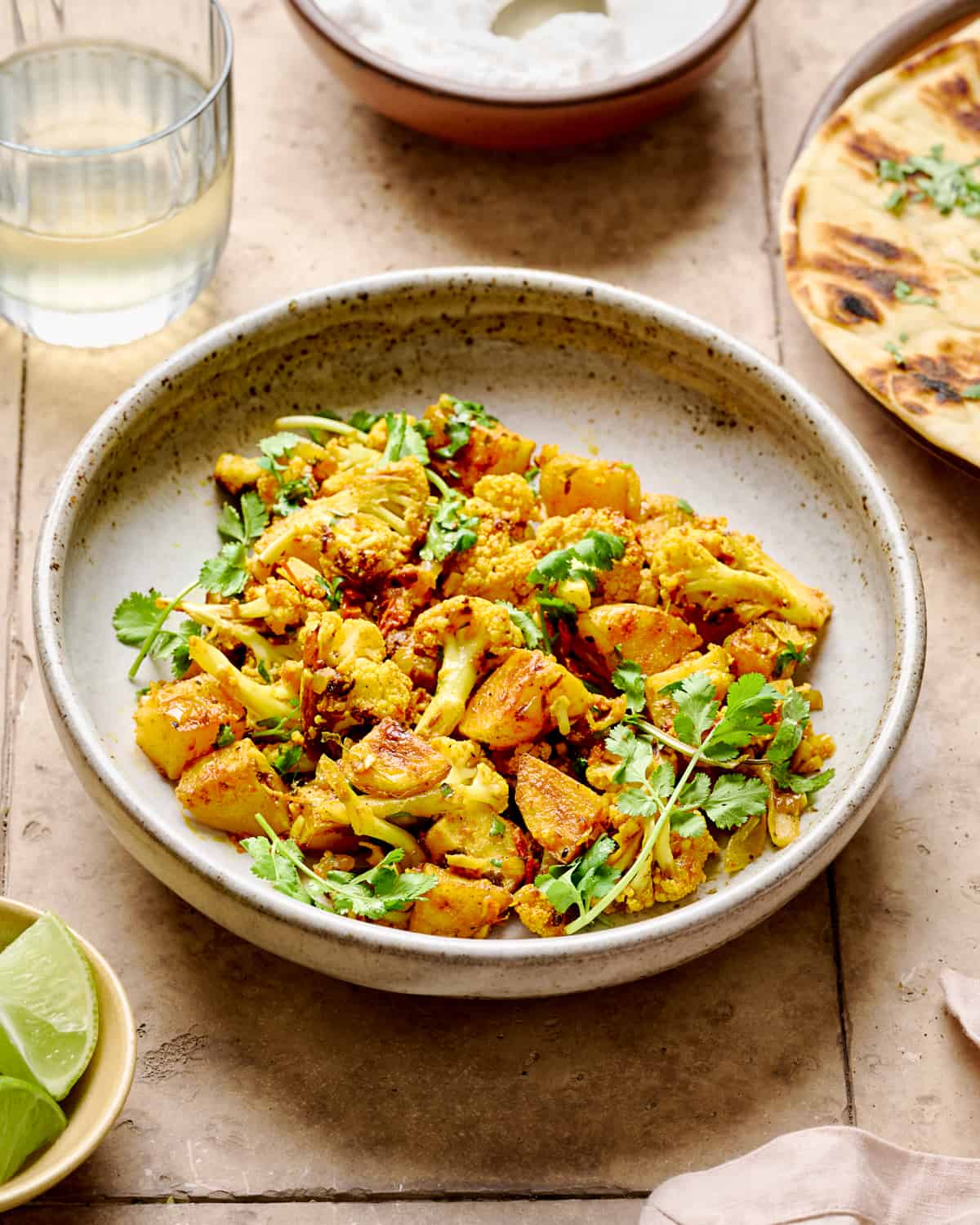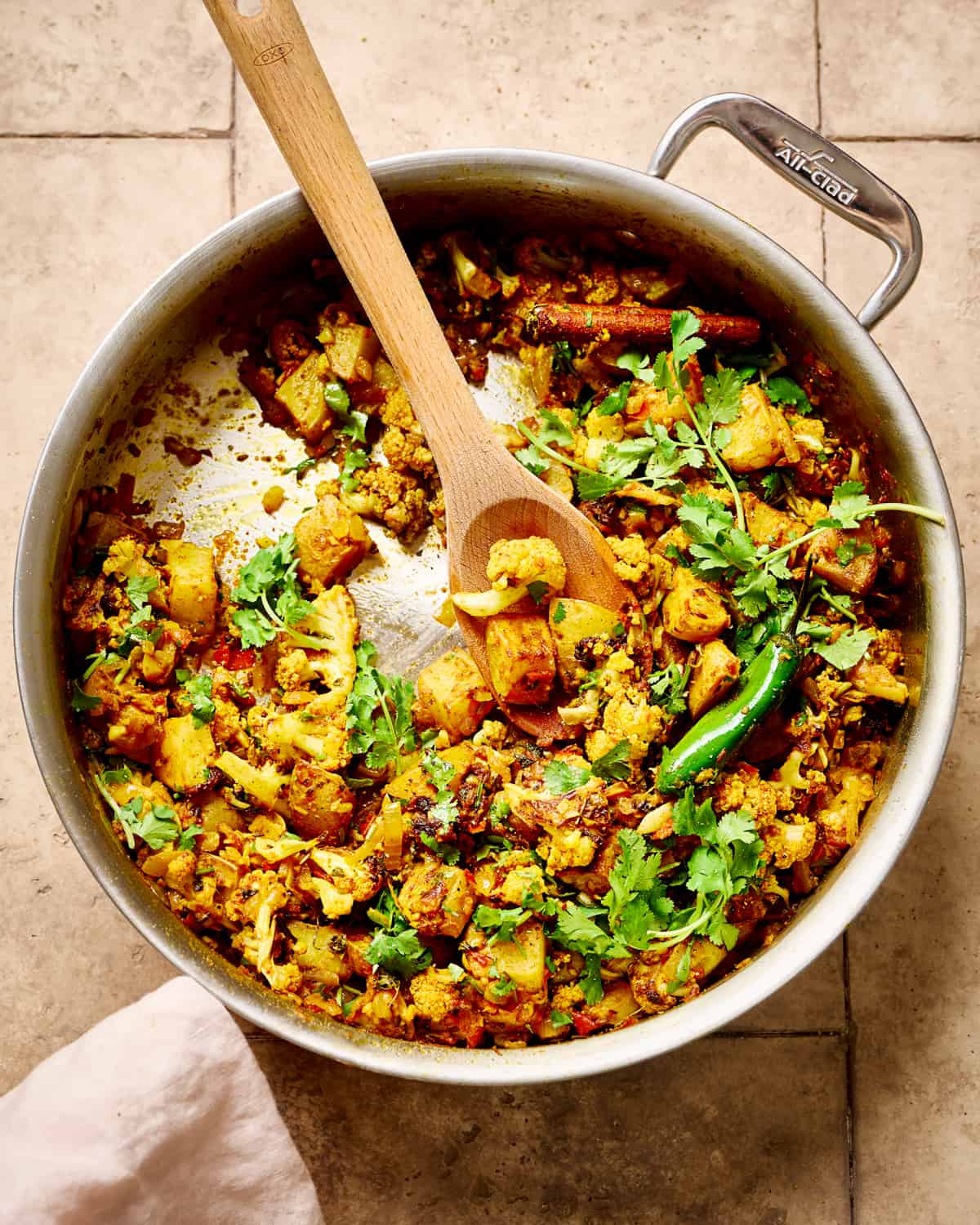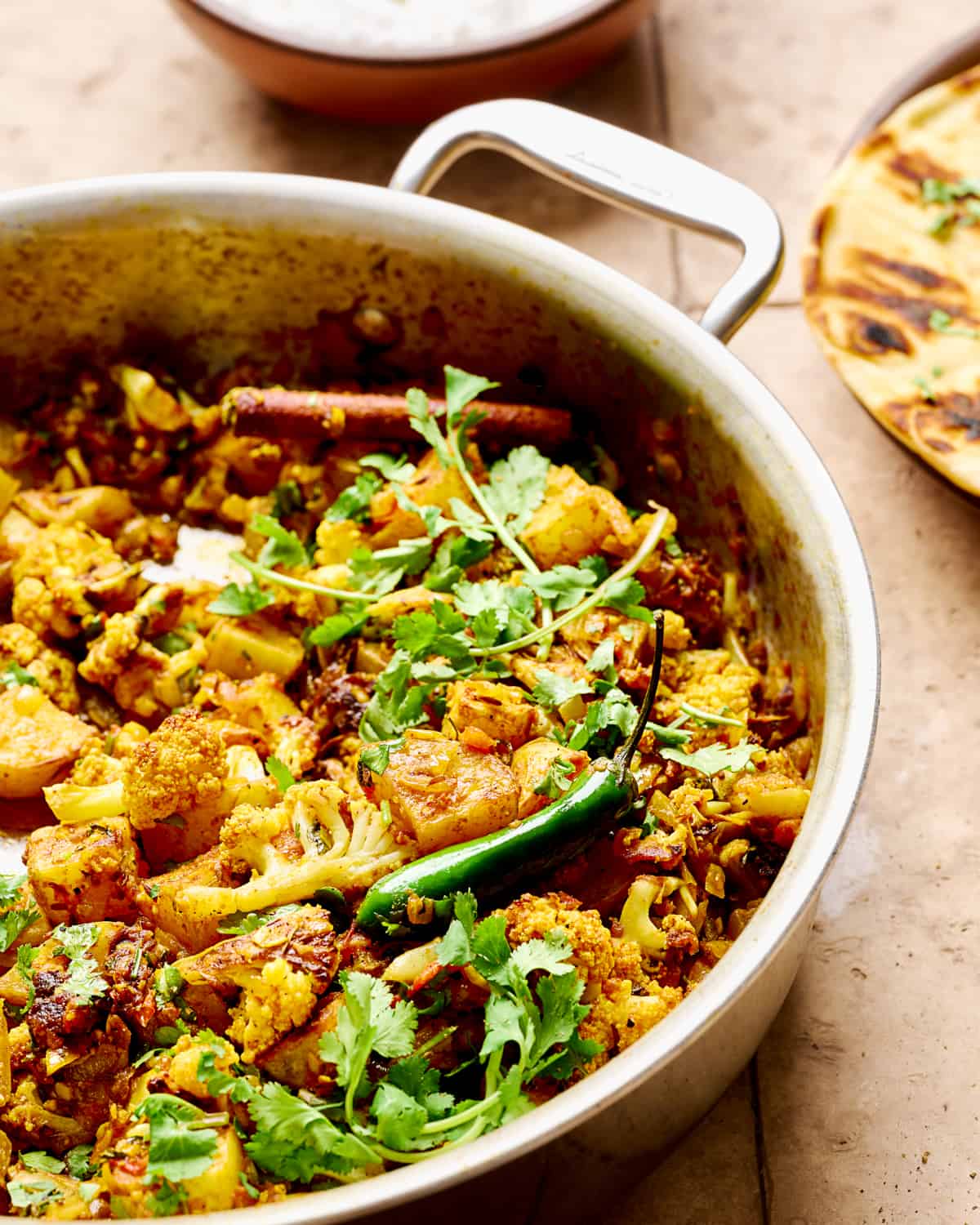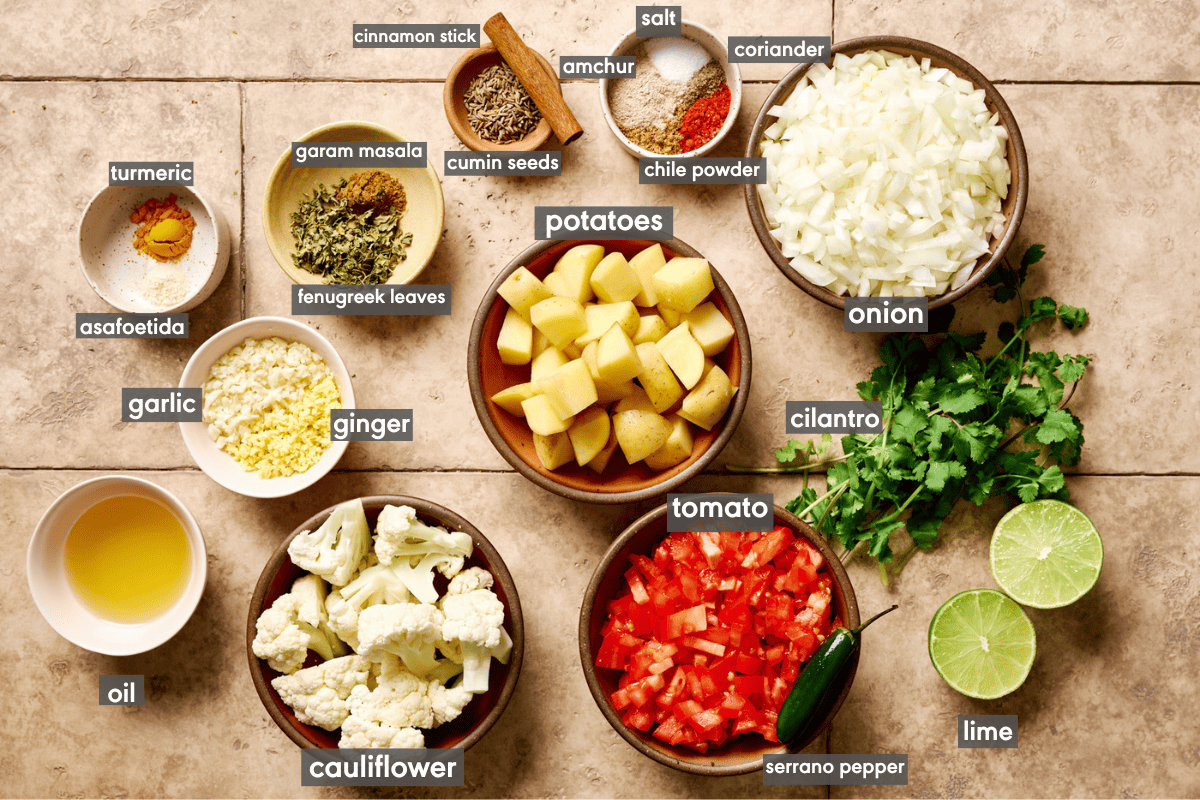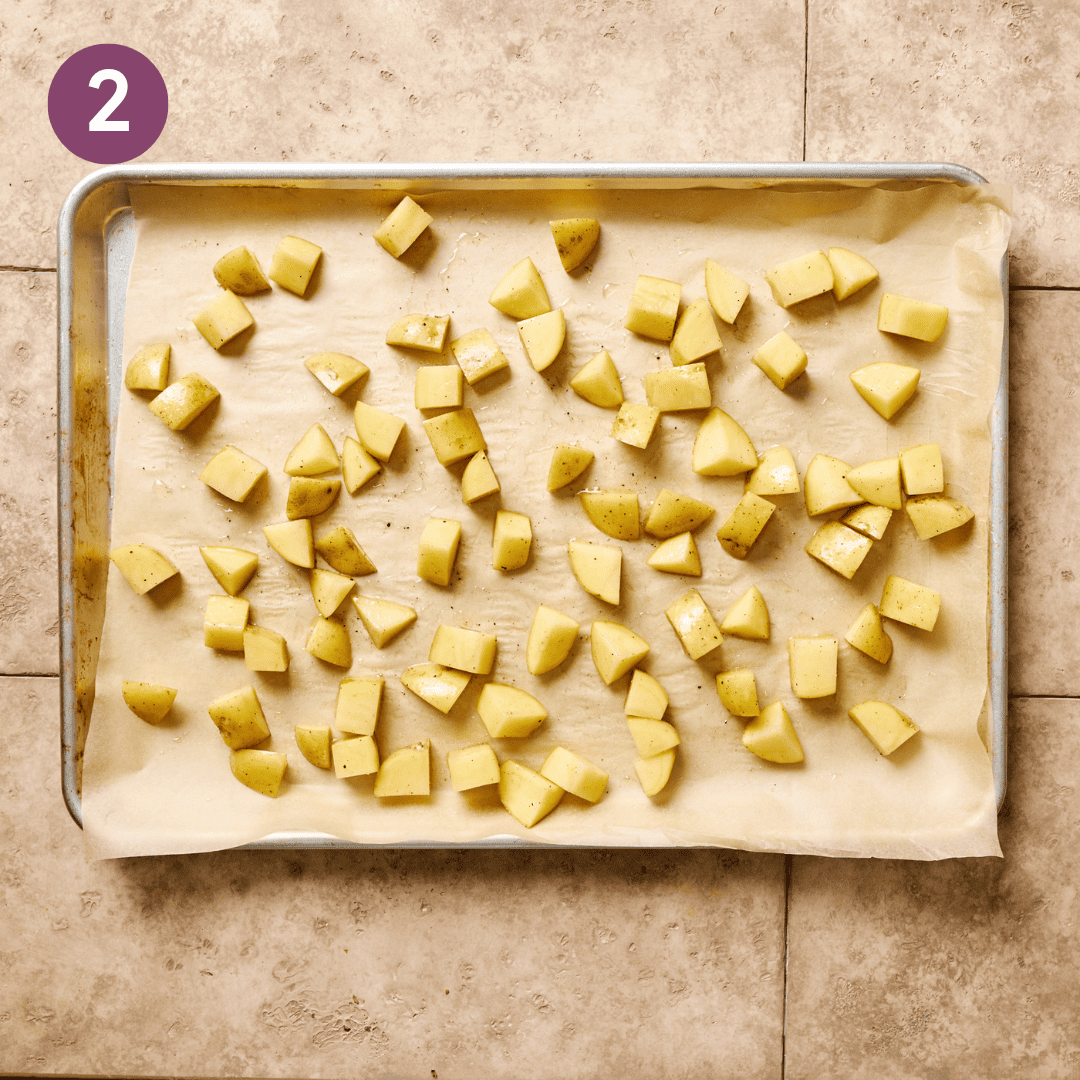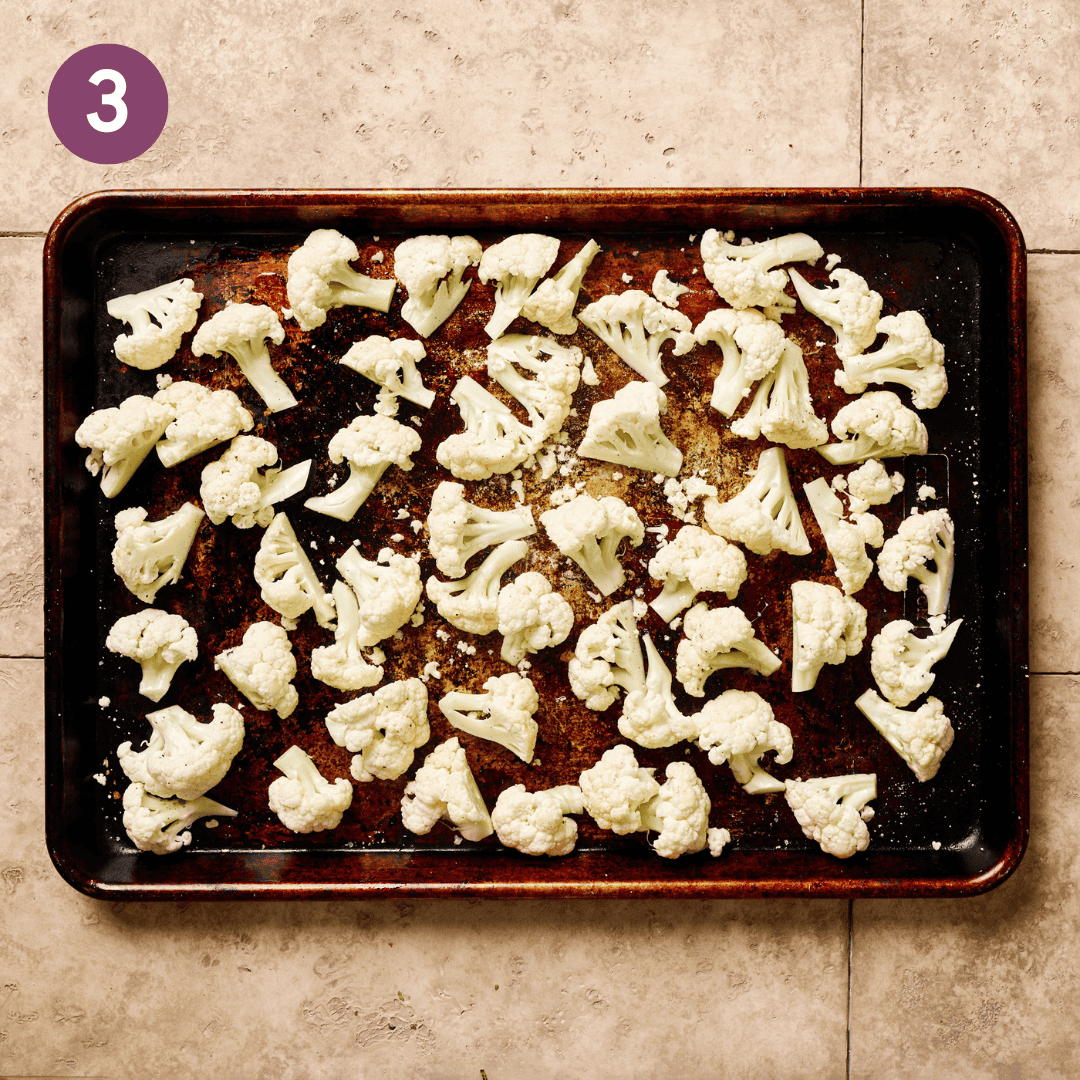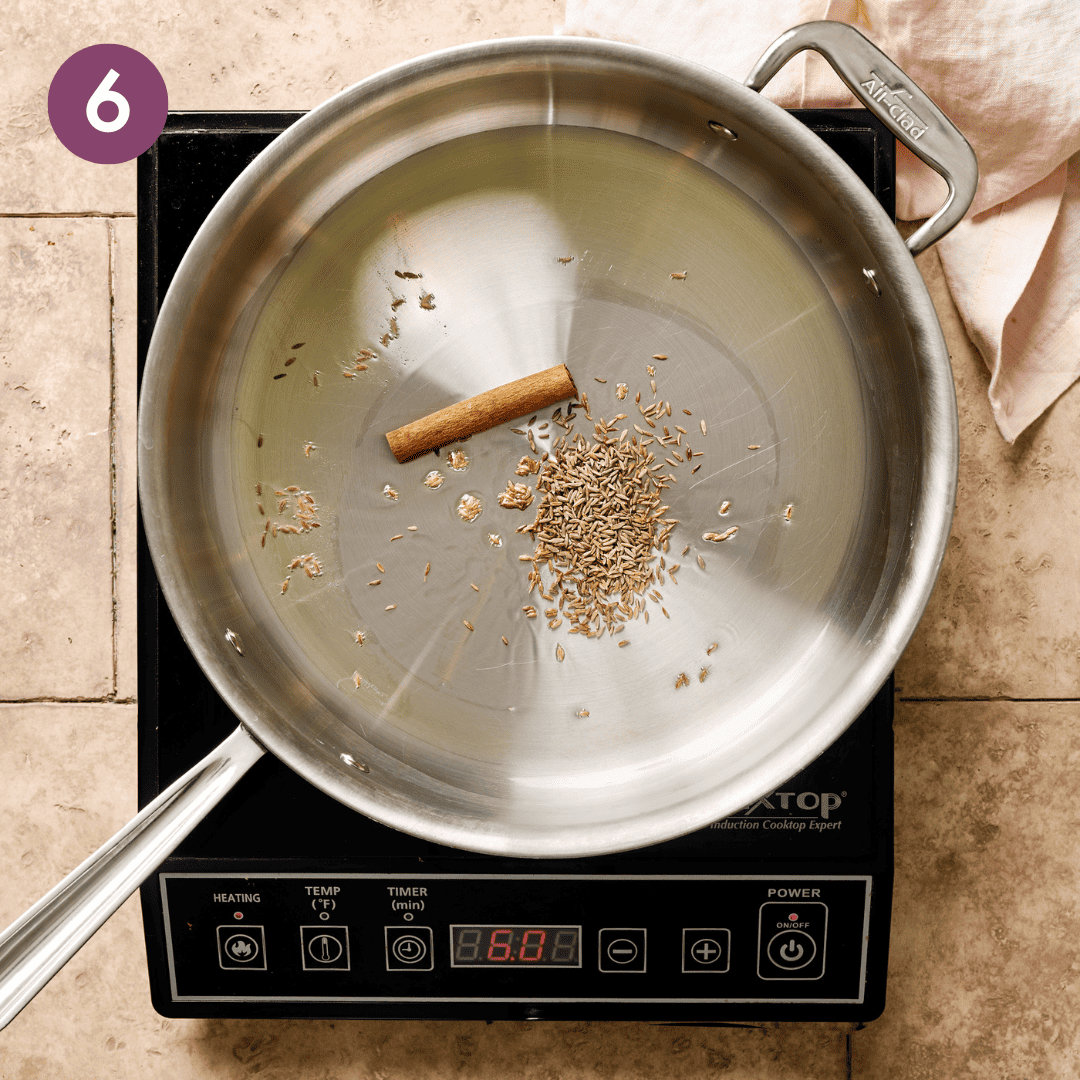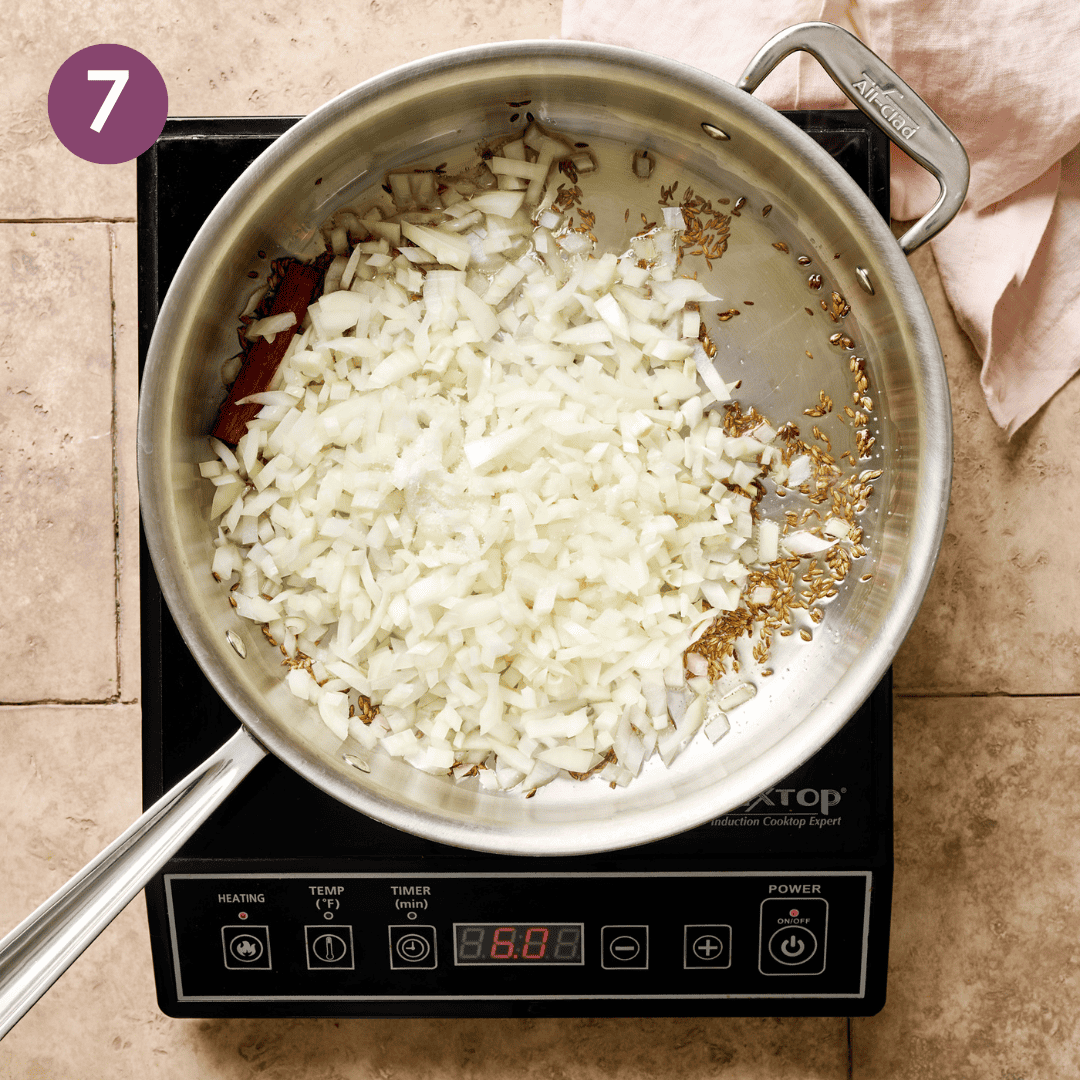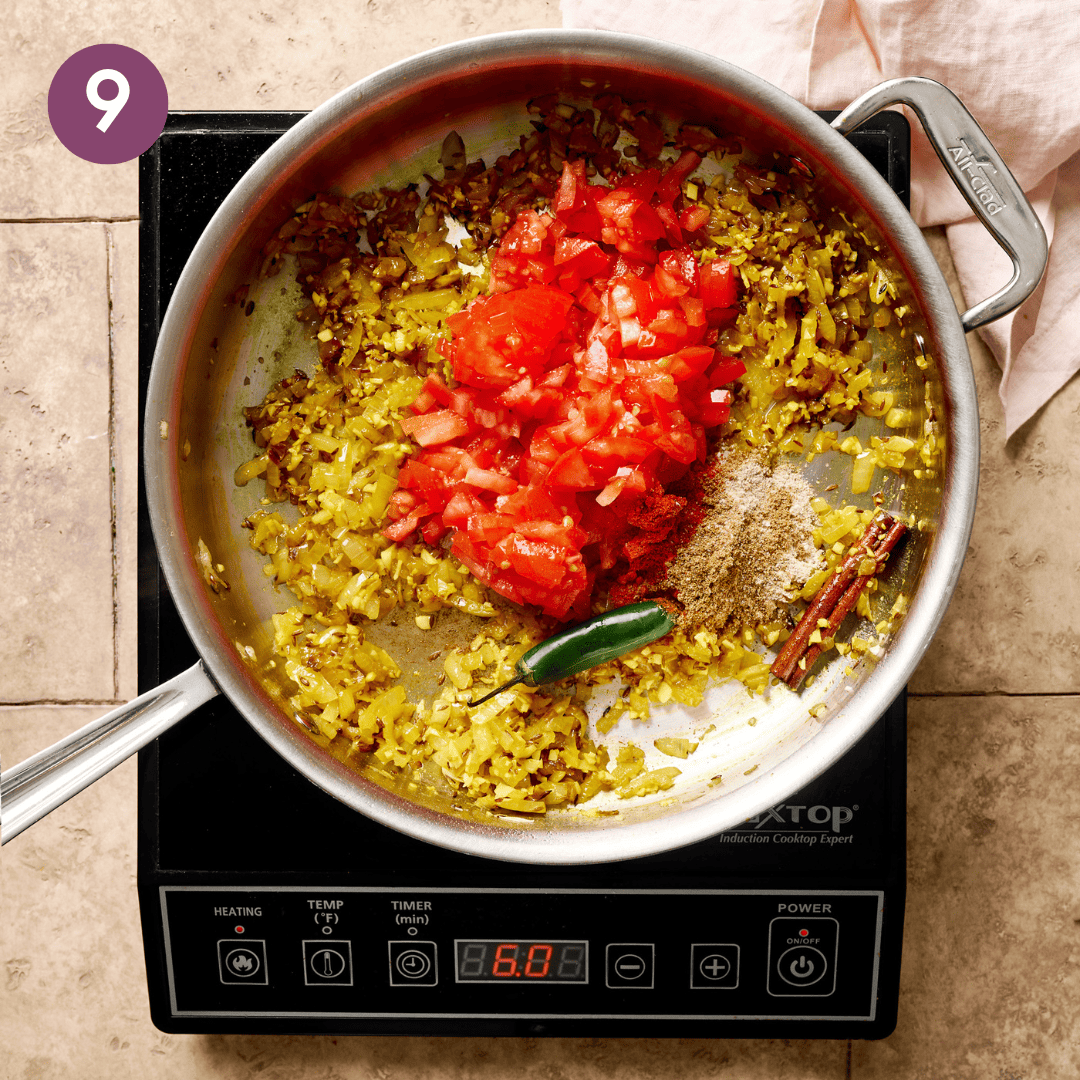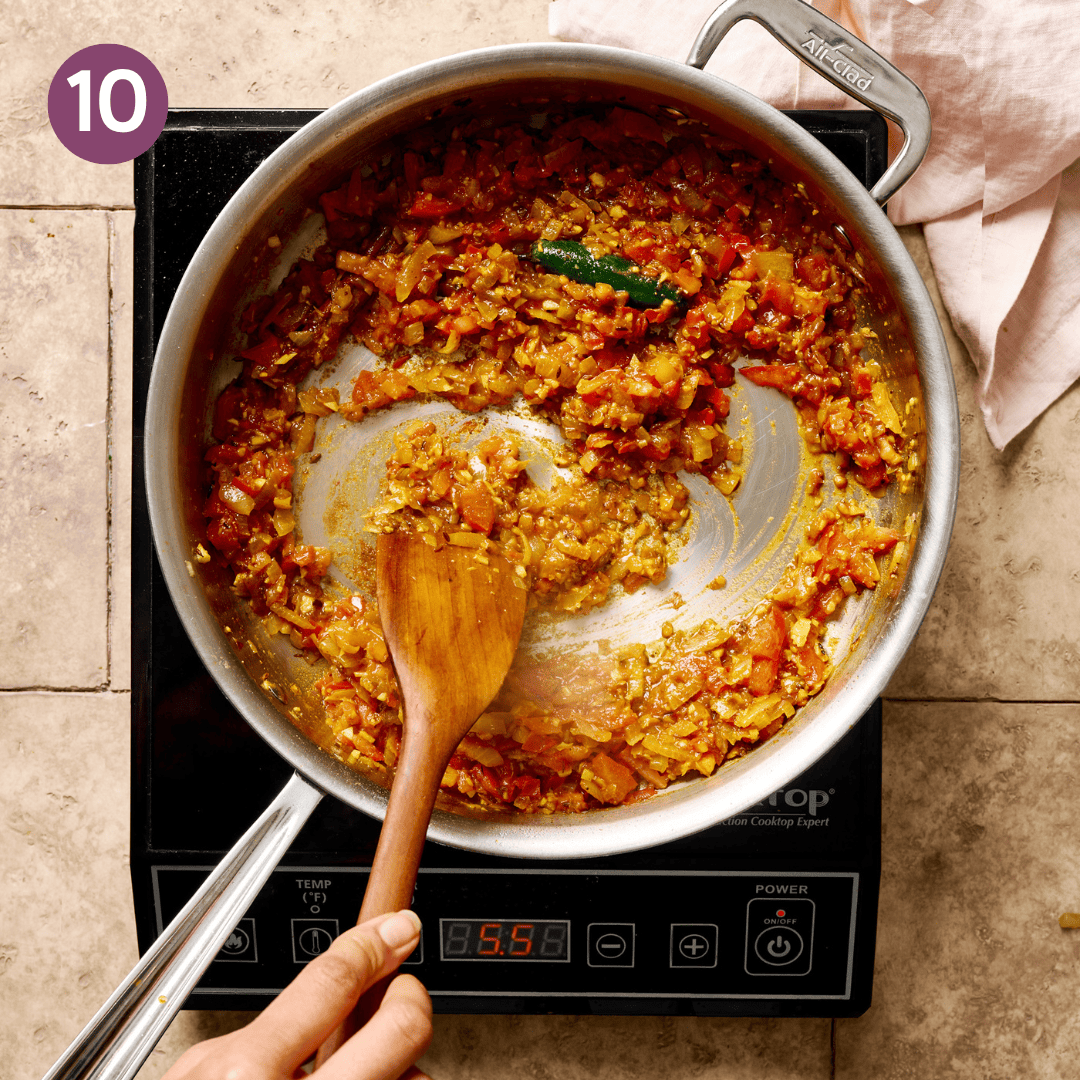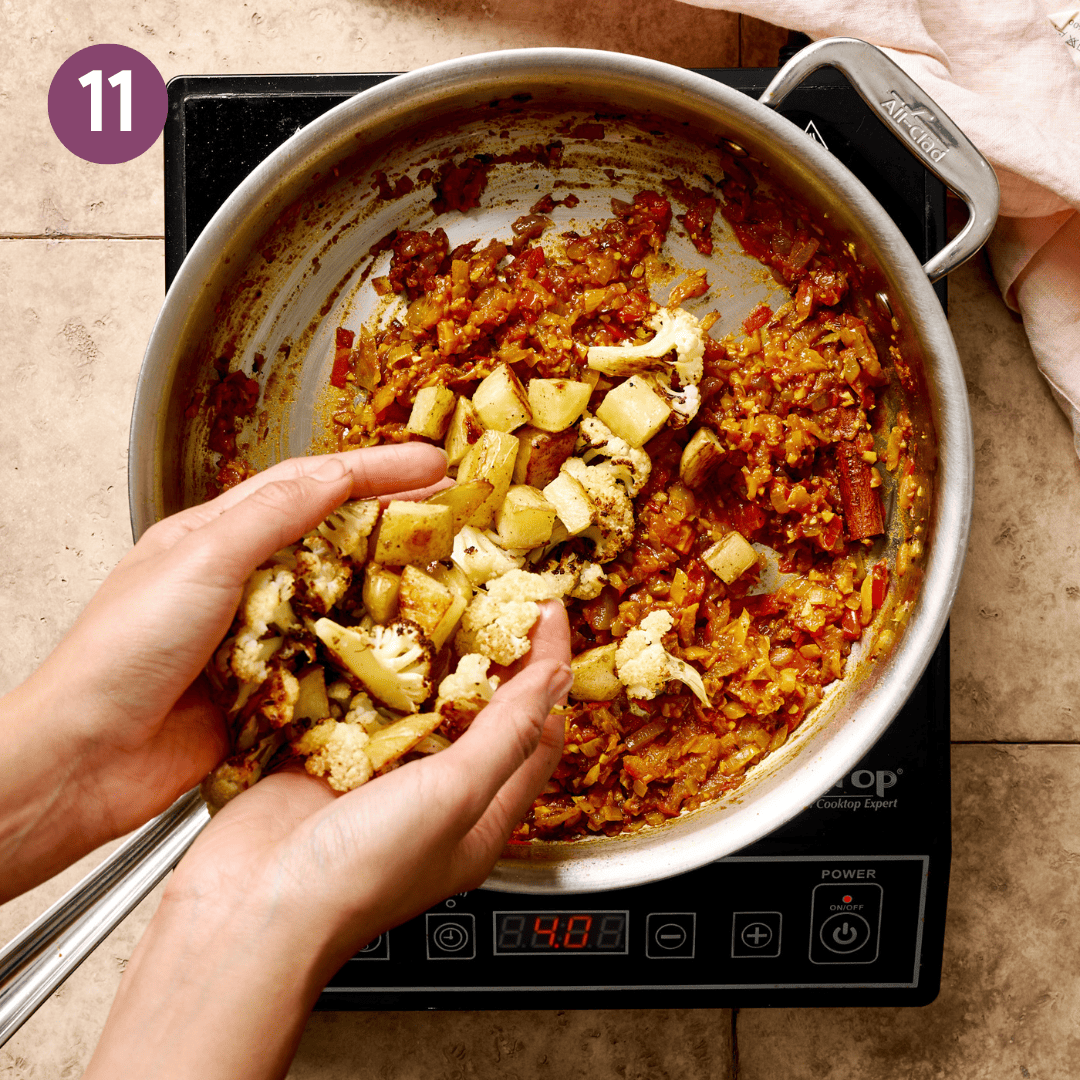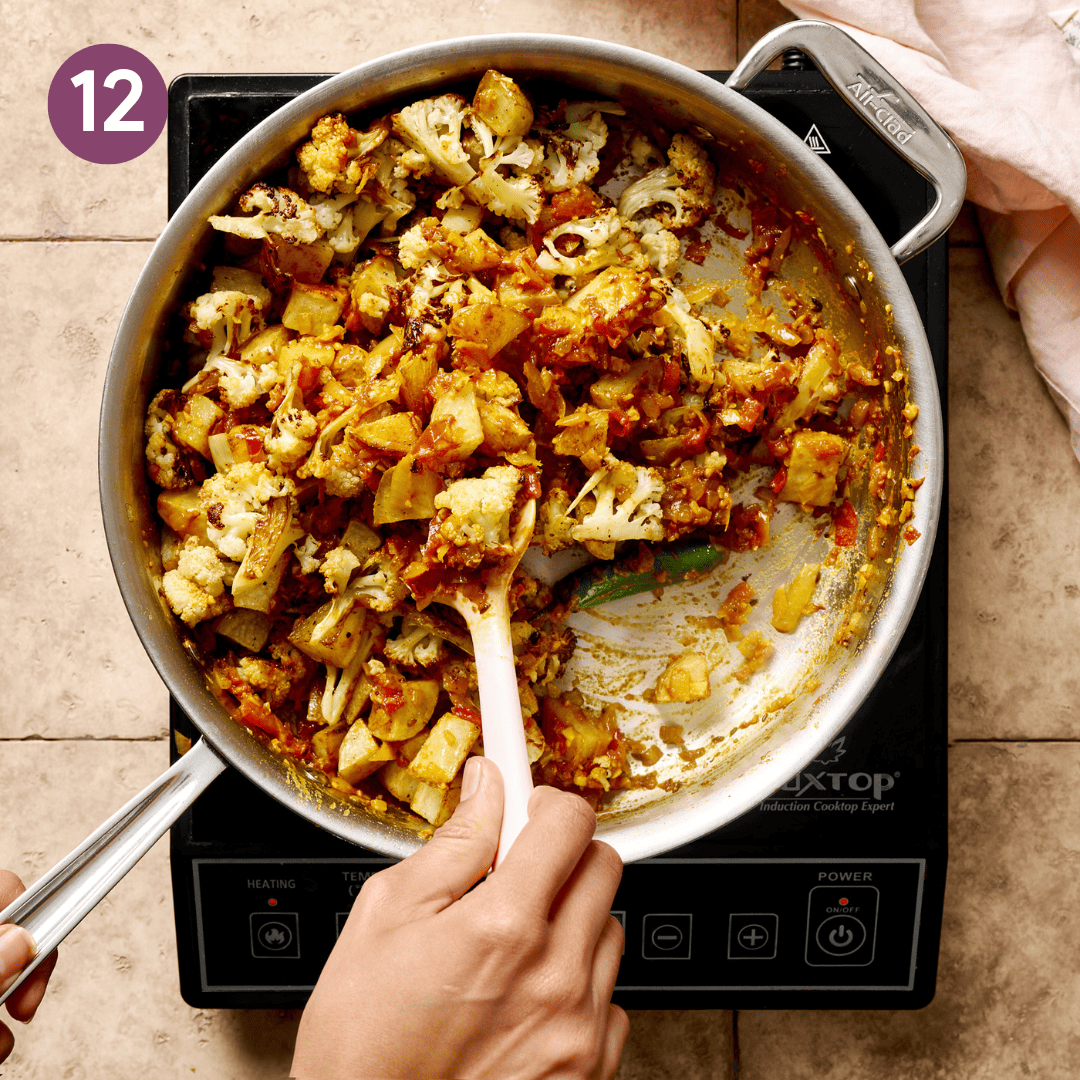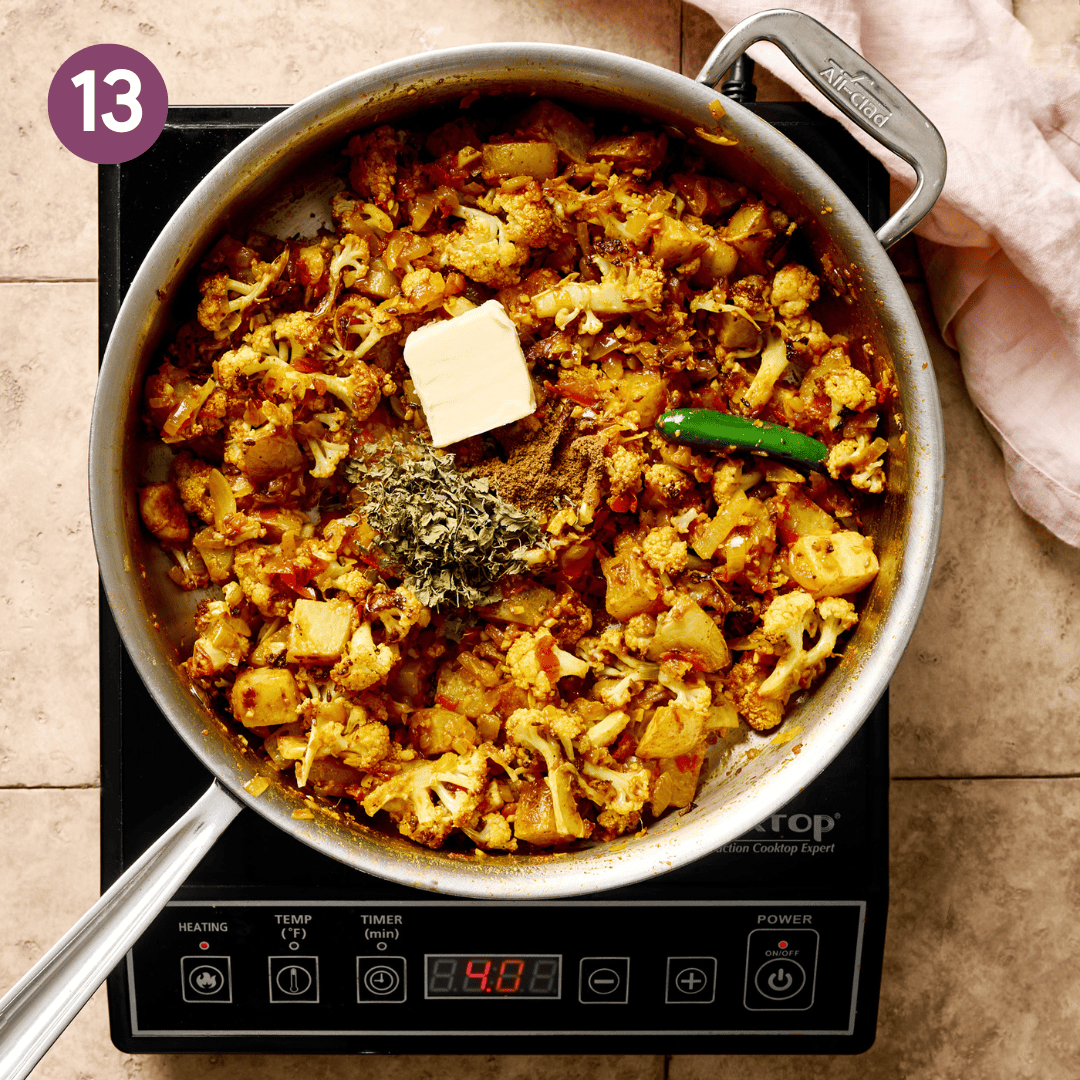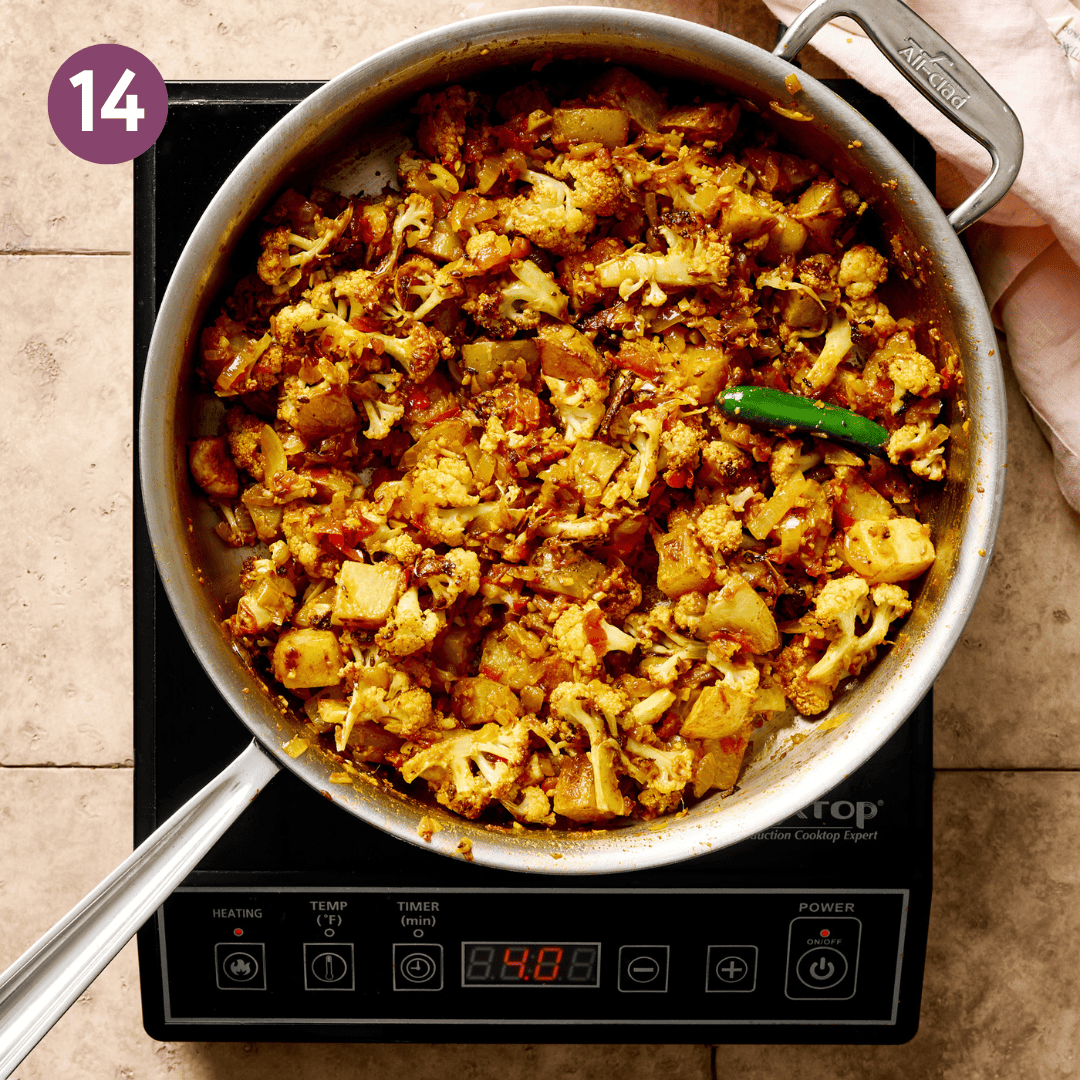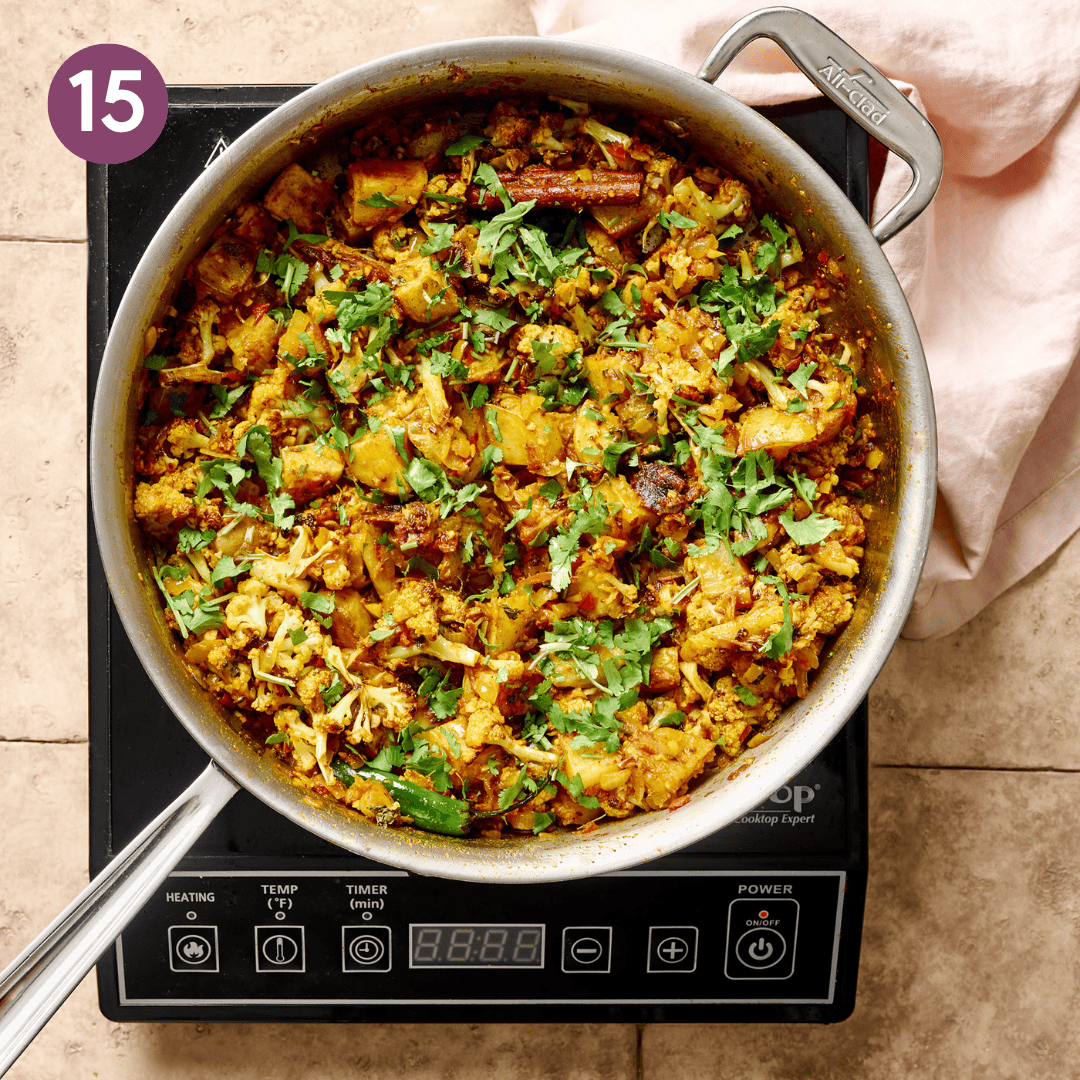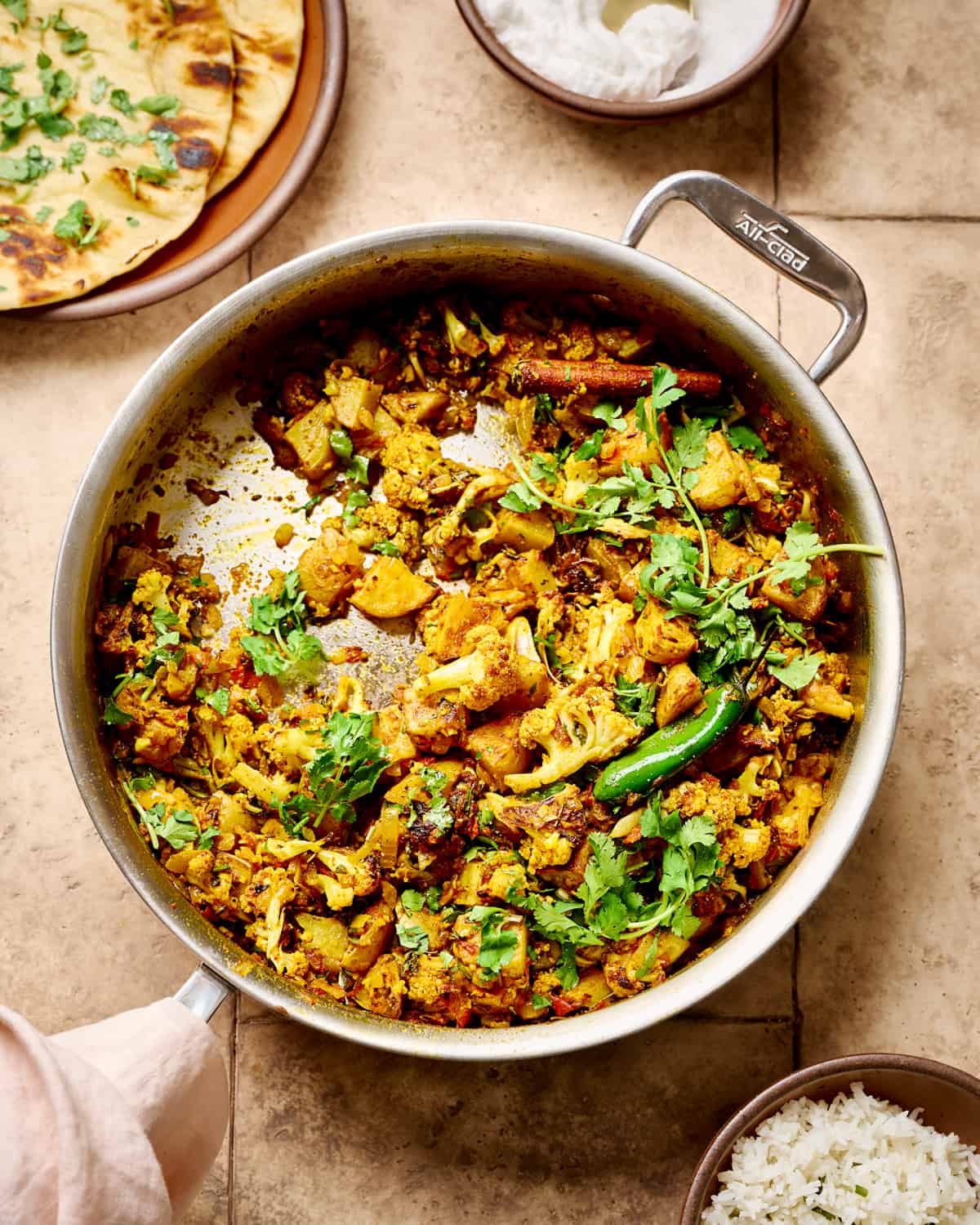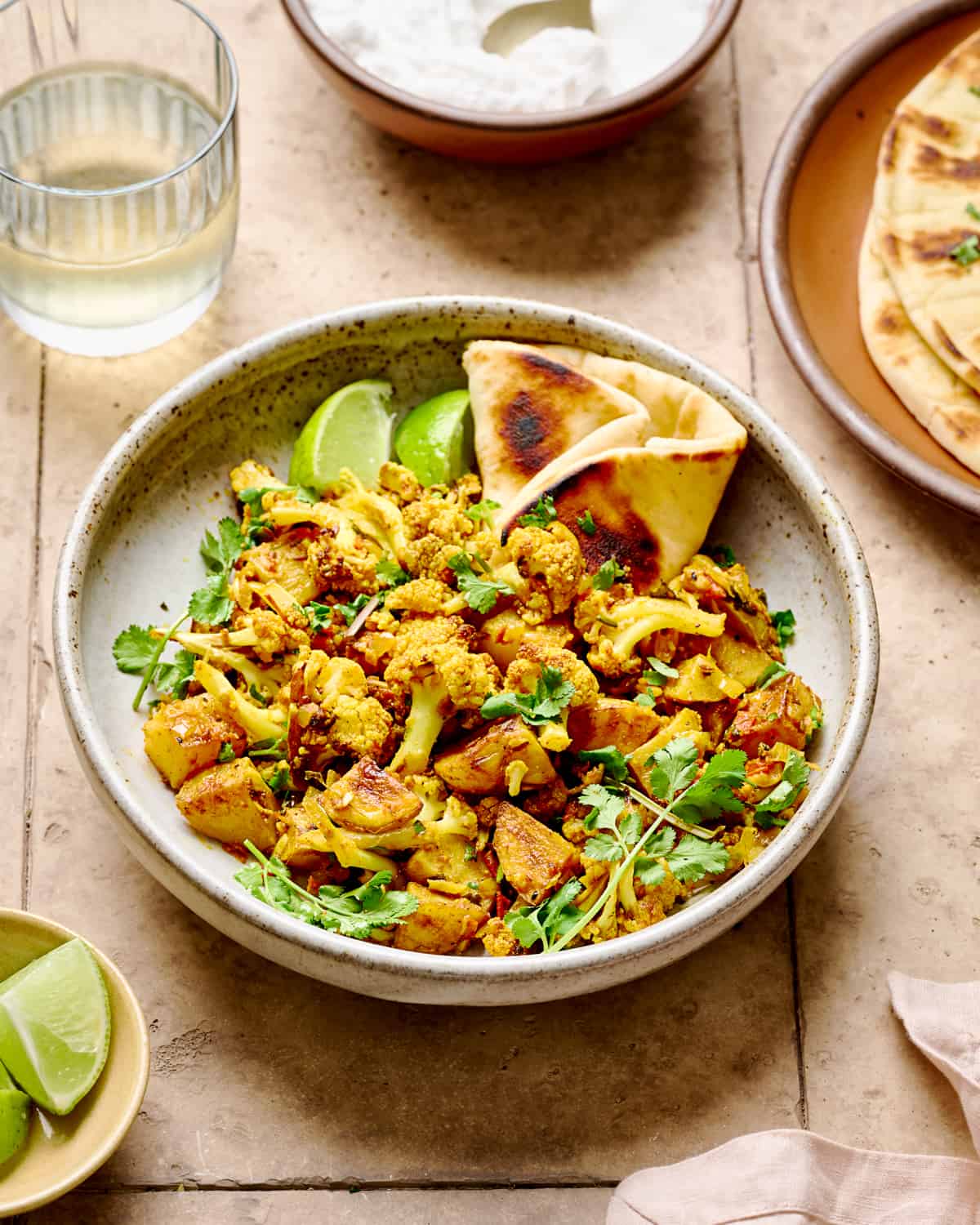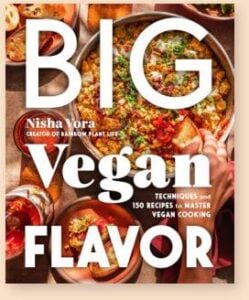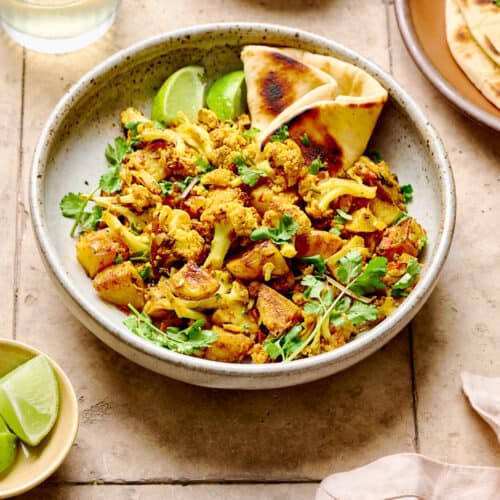What is Aloo Gobi?
Aloo gobi is an Indian dish made from potatoes (aloo) and cauliflower (gobi) as well as Indian spices, aromatics, and herbs. It’s (1) hearty and flavorful, (2) budget-friendly, and (3) naturally vegan. AKA it checks all the boxes! The aloo gobi recipe originated in the Punjab region of India. It’s such a simple and comforting dish, and you can find all kinds of variations of the recipe across the regions of India and from family to family. There are typically two types of aloo gobi: the dry version, also called a sabji in Hindi, and the curried version, which contains gravy/sauce. The former is most associated with home cooking and involves just two components: (1) the vegetables (aloo and gobi) and (2) the masala (a blend of spices, aromatics, and usually tomatoes). That’s the version I’ve made for you! At restaurants, the potatoes and cauliflower are typically deep fried before being cooked in a rich, oily gravy. While I’m not opposed to deep frying, I prefer to limit it to recipes that give you something that is both crunchy and significantly better than the alternative, like in my Gobi Manchurian. And the best news: you can achieve incredible results at home by taking a slightly non-traditional and more hands off route. More on that below.
The best method to cook aloo gobi at home
Traditionally, aloo gobi is made by toasting the aromatics and spices in a skillet, then adding the cauliflower and potatoes to steam-sauté. While this sounds like an easy one-pot meal, this method comes with several obstacles:
Solution 1?
You can try avoiding some of these issues by deep frying or pan frying the veg beforehand. Deep frying is delicious but can be messy and intimidating and not necessarily weeknight-friendly. And pan-frying requires you to cook the potatoes and cauliflower separately. That’s at least 20 extra minutes of active cooking (you can’t just walk away from the pan).
Solution 2?
You pre-cook the vegetables by steaming them instead. However, when we tried this, the entire dish tasted like sad steamed cauliflower (the same goes for boiling and blanching). Five tests into this experiment, I remembered the method I already rely on for cauliflower and potatoes… Roasting! Roasting cauliflower and potatoes is superior for home cooks for a few reasons:1. It’s hands-off. No need to flip the veg at all! That extra time can be used to prep your masala and start cooking it on the stove.2. It’s SO delicious. The veg takes on a gorgeous golden brown color and their natural sugars caramelize in the dry heat of the oven. Roasted cauliflower = 100x better than steamed cauliflower. 3. It’s easy. Toss your veggies with oil, salt, and pepper, then pop the pans in the oven!4. Maximal flavor with maximal efficiency. The combination of dry heat + fat infuses a lot more flavor into the veggies than if they were steam-sautéed in a pot together. As a result, they only need a quick 5 minutes to be coated in the masala.
Step-by-step instructions
Cut the potatoes into 1-inch chunks/cubes. Cut the cauliflower into small-medium sized florets.
Potatoes and cauliflower
AKA aloo and gobi! For the potatoes, go with a waxy yet starchy variety, like Yukon Golds. Their starchy, waxy, and creamy interior is what makes them the “Goldilocks” of the potato world.
Substitute: Russet potatoes will work if that’s all you can find but they may get a little softer in the oven.
As for the cauliflower, a medium or small-medium-sized cauliflower head will work great.
Classic Indian aromatics
The masala includes a handful of classic aromatics used in Indian cooking. Onions, ginger, garlic, and green chiles start this recipe off on a super flavorful journey before tomatoes come in and add the necessary tang and very subtle sweetness.
Substitute: You can sub canned diced tomatoes in place of fresh tomatoes in an equal amount.
Whole spices
The beauty of aloo gobi is that there is no one way to make it. I like to start mine by toasting whole cumin seeds and a small piece of cinnamon stick. You won’t usually find cinnamon in aloo gobi but it added something special to our test #7 that the other versions were missing.
Ground spices
You’ll almost always find turmeric, coriander, and red chili powder in aloo gobi. There are two more spices you may not be as familiar with: amchur powder and asafoetida (known as hing in Hindi). Amchur is the powder from dried, unripe mangoes. It’s tangy and refreshing, making it a bright addition to chutneys, marinades, and many other Indian dishes. You can read more about amchur in this article by Serious Eats.Asafoetida lends a quintessentially Indian flavor that is hard to describe in words. It’s noticeably pungent and a bit funky, but don’t let this dissuade you because it really adds a special something. But if you’re allergic to gluten, skip it, as most varieties contain small amounts of gluten. The brand Pure Indian Foods has a GF option. Tips for buying: You can buy all these spices at your local Indian grocer, or online. This is the brand of asafoetida my mom has used for decades (affiliate link). Substitute: No amchur? Stir in extra lime or lemon juice at the end to achieve that tangy flavor. No asafoetida? Just omit it. And if you don’t have a mild red chili powder like Kashmiri chili powder, use ¾ tsp paprika + ¼ tsp cayenne instead.
Finishing spices
Last but not least, my aloo gobi is finished with two more spices: garam masala and fenugreek leaves, AKA kasoori methi. They add a distinctively bold, savory, and pungent flavor that can’t be replicated with anything else. The two are technically listed as optional ingredients but if you visit an Indian grocery store, I’d consider them a must-buy! As they come together, they add the je ne sais quoi flavor that you usually only find in Indian restaurants and dishes like my Tofu Tikka Masala and Malai Kofta. Roast the vegetables. Lay the potatoes on a parchment paper lined baking sheet. Drizzle them with some oil and a few pinches of salt and pepper, then toss to combine. Add the cauliflower to a second baking sheet (without parchment, for better browning). Season with oil, salt, and pepper. Roast both pans until the cauliflower and potatoes are starting to brown in some spots and feel tender, but not soft. Prepare the masala while you wait. Heat some oil in a deep sauté pan. Once it shimmers, add the cinnamon stick and cumin seeds. Toast and stir until they darken in color and the cumin seeds start dancing in the pan. Now add the onions. Once the onions are golden brown, add the garlic, ginger, turmeric, and asafoetida. Stir frequently for 1-2 minutes. Stir the amchur, coriander, chile powder, serrano pepper, tomatoes, salt, and pepper into the pan. Let the mixture simmer until the tomatoes have almost melted into the masala. Now add in the roasted cauliflower and potatoes. Gently stir to coat the veggies in the masala. Cook for 5 minutes, tossing occasionally to make sure every piece is well coated and cooks evenly. Crush the kasuri methi with your hands. Stir them into the pan, along with the garam masala and vegan butter. Turn off the heat and let the aloo gobi rest for 5 minutes. To finish, stir in the cilantro and the lemon or lime juice. Season to taste with more salt and/or garam masala. Discard the cinnamon stick and enjoy!
Tips for making this recipe
Use these helpful recipe tips to make the best version of this Indian side dish or main:
Make a trip to your Indian market.
Unless your pantry is already stocked with Indian spices, I highly recommend visiting your local Indian grocery store. It’s the best place to find spices you might not already have, and you’ll be able to make the best possible version of this dish. Plus, they’re so much more affordable than your standard grocery store! Remember to look for amchur powder during your visit, as it’s commonly used in aloo gobi. My favorite online spice brand, Burlap & Barrel, also sells a fantastic amchur powder grown on a family farm in the most famous mango-growing region of India.
Roast the veggies on two sheet pans.
I know it’s tempting to shove both the cauliflower and potatoes onto the same sheet pan, but an overcrowded pan leads to steamed (AKA sad) vegetables. Giving the veggies room to sprawl out on their own pans allows for the heat to circulate around each piece, leading to beautifully browned and tender vegetables. Quick tip: Roast the potatoes on a parchment paper-lined pan to prevent sticking. Cauliflower, on the other hand, browns better on an unlined pan (but if you want to save time on cleanup, line the pan).
Go gentle on the spiciness
Most of the heat in this dish comes from the serrano pepper. To avoid overwhelming this dish, I just make a small slit in the pepper instead of dicing it up and sauteeing it like usual. However, if you don’t like spicy food at all, omit it. If you like spicy food, make an even bigger slit. This really brings the heat! I love spicy food but I still prefer to use a small slit so the heat isn’t overpowering.
For extra richness, add a little butter
Vegan butter, of course! Stirring in a knob of butter when you add the garam masala and fenugreek leaves adds an indulgent mouthfeel to the finished dish. If you give this Aloo Gobi recipe a try, be sure to tag me on Instagram with your recreations and please comment with your feedback below! Recipe: Nisha Vora / Rainbow Plant Life | Photography: Megan Morello
Big Vegan Flavor
Techniques and 150 recipes to master vegan cooking.
